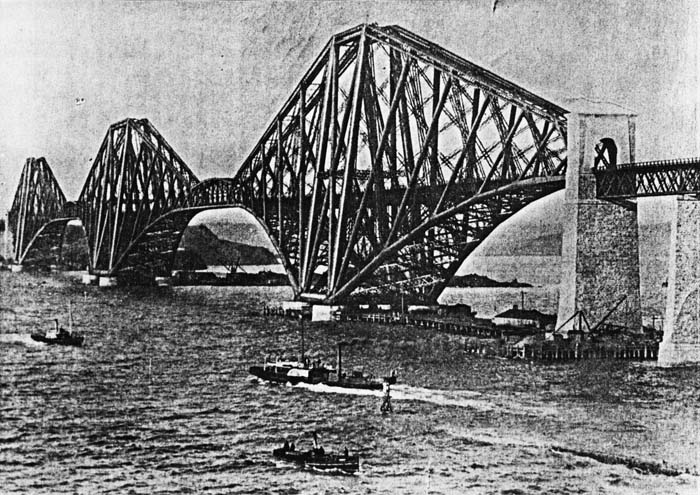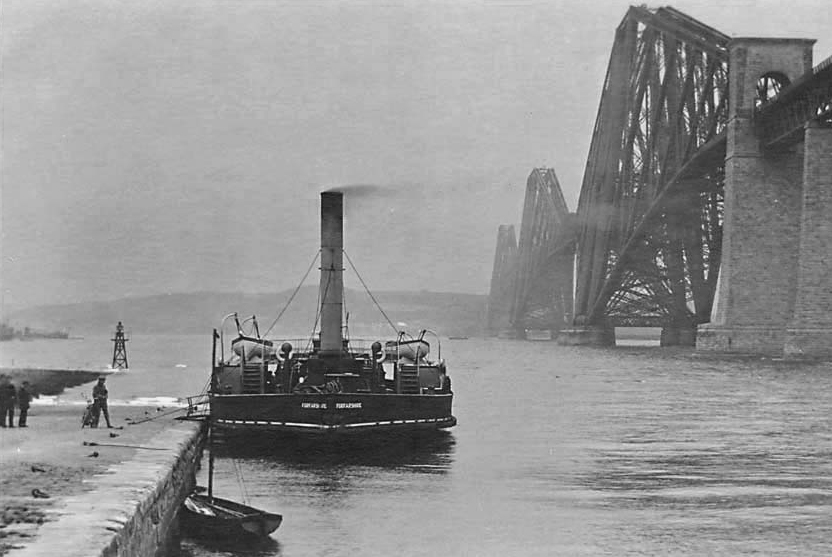The Ferries – 1890 to 1920 – Impact of the Rail Bridge
| < Private Hands | Δ Index | Back to the NBR > |
Despite all the money spent by the railway companies, the Queensferry Passage failed to regain its status as a major north-south route.
The railway connections served the immediate area, with long-distance traffic crossing either on the ferry from Granton to Burntisland, or by a railway bridge at Alloa.
In 1883, work started on the Forth Bridge, and tourists flocked to see the bridge works.
In 1887, Captain Arthur started sight-seeing excursions using the “John Beaumont” and two other ships “Dalmeny Castle” and “New Undaunted.”

This photo from the late 1880s shows “John Beaumont” “Dalmeny Castle” and “New Undaunted” and the bridge works at South Queensferry.
When the bridge opened on 4th March 1890, the North British had no further use for the Passage, and leased it to Captain Arthur, selling him “John Beaumont.”
He moved his operation to Port Edgar, and ran sight-seeing operations with occasional ferry crossings – subsidised by the railway – to provide the minimal legal requirement. When Captain Arthur retired in 1893, the passage was leased to John S. Wilson of Bo’ness.

“The Forfarshire”
He purchased a thirty-two year old Tay ferry, the “Forfarshire”, and used it to provide bridge cruises and ferry crossings.
As the 20th century started, road traffic began to increase, and in 1908 Wilson added an eighteen-year old Thames ferry, the “Woolwich.” Road traffic could now be carried all year round, but only at high water!
The outbreak of World War I brought a surge in road traffic because of the Naval Base at Rosyth, and for a time Wilson was able to operate without a subsidy, but this was restored when the Admiralty began to operate its own service to Rosyth in 1917.
| < Private Hands | Δ Index | Back to the NBR > |